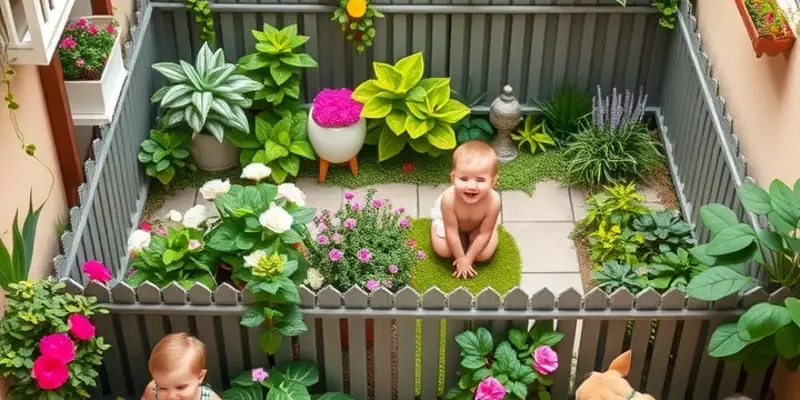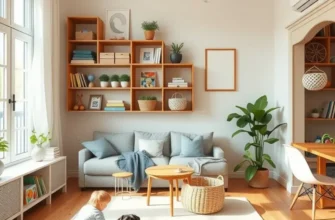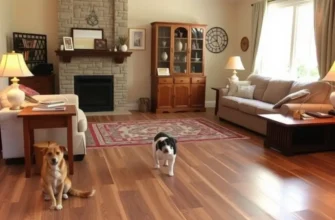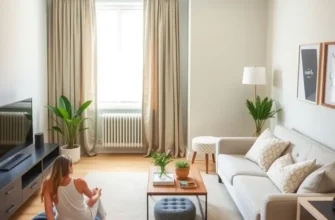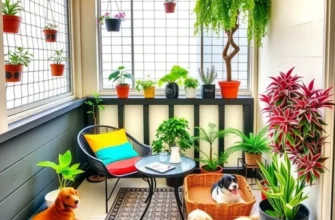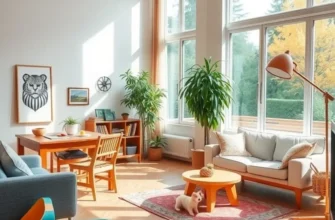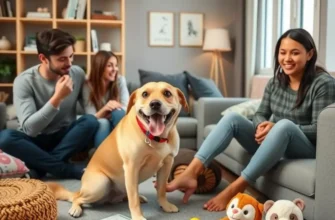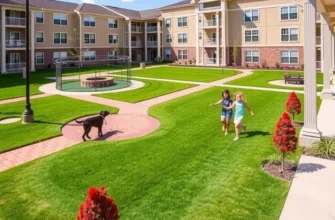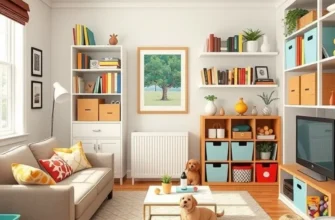Apartment living can often feel restrictive, especially for families, couples, and pet owners who desire a personal outdoor space. Fortunately, creating a child-friendly garden in an apartment can be both achievable and rewarding. A well-designed garden not only serves as a safe haven for kids and pets but transforms an ordinary balcony or backyard into a vibrant, multifunctional area. In this guide, we’ll explore key elements that ensure your apartment garden is safe, engaging, and enjoyable for everyone, including practical tips to nurture greenery in a limited space. We’ll touch on essential safety measures, plant selection for pets and children, and design tips that cater to outdoor fun. Rest assured, with a bit of creativity and insight, your personal garden can become a delightful extension of your living space.
Safety First: Essential Tips for Child and Pet-Friendly Gardens
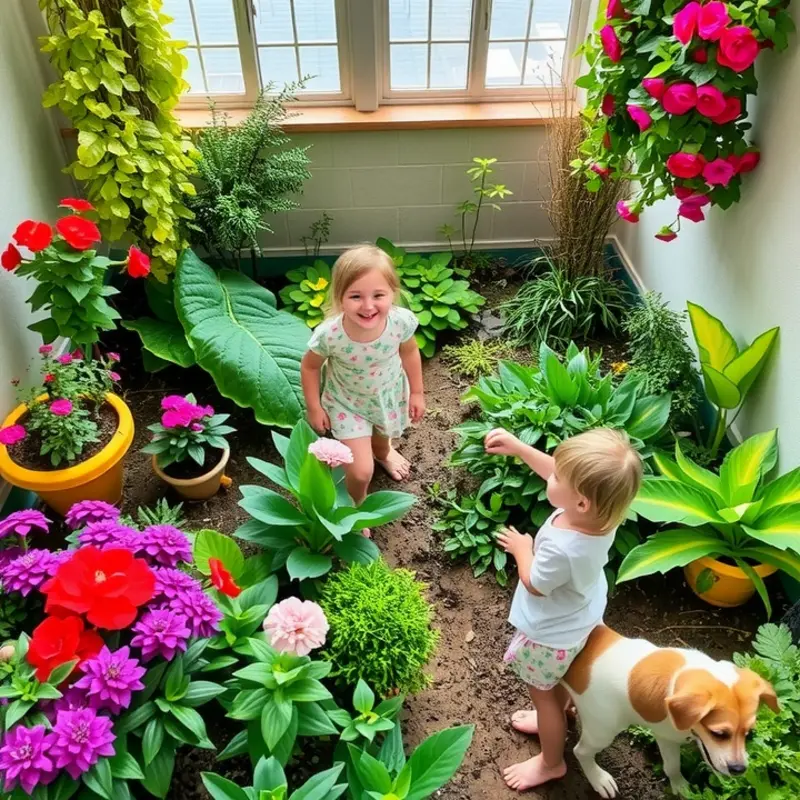
Creating a garden in your apartment that’s safe for both children and pets requires careful planning and consideration. The first step is choosing plants wisely. Some common ornamental plants can be toxic if ingested by children or pets. Opt for non-toxic varieties like sunflowers, snapdragons, or herbs such as basil and mint. These not only add greenery but are safe for curious little hands and paws.
The layout of your garden should prioritize easy accessibility for your children while establishing boundaries for safety. Consider raised beds or pots that are at a suitable height for kids to reach but are off the ground enough to deter pets from digging. Creating clearly defined paths using smooth, non-slip materials can help children navigate the space safely without the risk of tripping or falling.
When it comes to materials, avoid using sharp-edged garden tools or structures that might pose a risk to play. Store tools in a secure area, perhaps within a locked cabinet or high shelf. Choose garden furniture made from durable, rounded, and non-toxic materials. If your garden includes a water feature or pond, ensure it’s shallow and securely covered when not in use to prevent accidental fall-ins.
Installing fencing is another essential safety measure. A sturdy, secure fence around your garden area prevents wandering children and pets from accessing unwanted areas. Ensure the fence has no gaps that small pets could squeeze through and is high enough to contain even the most adventurous toddler.
To maintain a vibrant yet safe space, avoid chemical fertilizers and pesticides. Instead, explore organic and natural alternatives for pest and weed control. Companion planting is an effective method, where certain plants help each other thrive and repel pests naturally. Marigolds, for instance, are excellent companions for vegetables and simultaneously deter some garden pests.
By weaving creativity into safety, you can craft an engaging environment where children can learn the joys of gardening. Designing interactive spaces such as a mini herb garden or a sensory plant area can stimulate their senses and instill a sense of responsibility in caring for plants. Children can help with watering or planting seeds, learning valuable environmental stewardship skills in the process.
To further enhance child safety in your apartment’s balcony or terrace garden, consider using safety nets or railings. These prevent accidents without obstructing the view or sunlight. Balcony safety can be enhanced with such measures, ensuring peace of mind for parents and pet owners.
In creating a harmonious balance between aesthetics and safety, remember that the goal is a space where families and pets can relax, play, and grow together. With thoughtful selection and careful planning, your apartment garden can become a cherished extension of your home where every member of the family, whether two-legged or four-legged, can thrive safely.
Maximizing Small Spaces: Practical Garden Ideas for Apartments
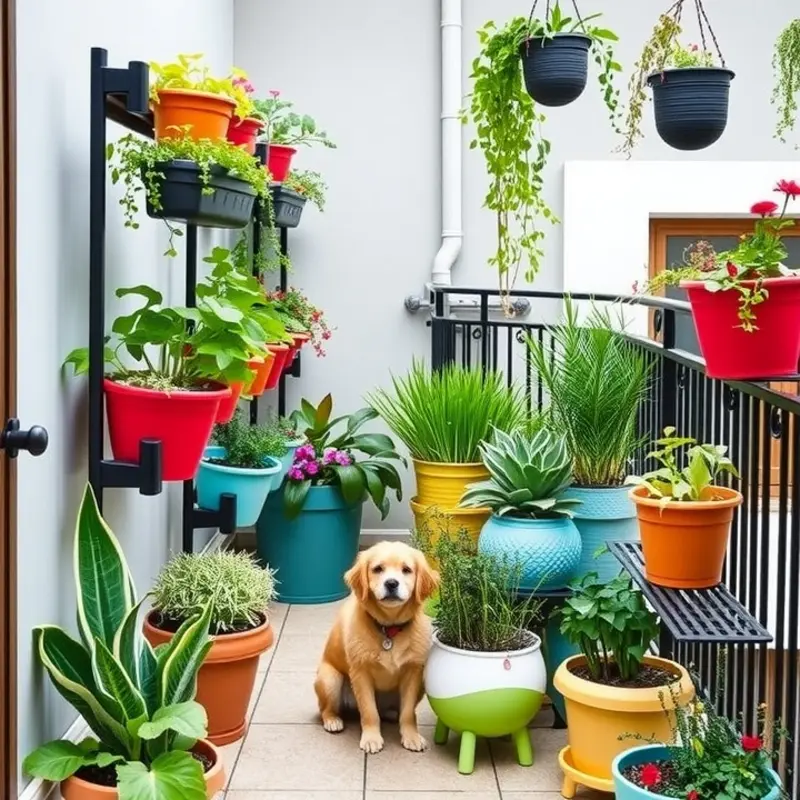
Apartment living often restricts the availability of outdoor space. However, with creativity, you can transform even the smallest areas into flourishing gardens. One of the most effective techniques is vertical gardening. By utilizing vertical space, you maximize the area without taking up room on the floor. Consider using trellises, wall planters, or stackable containers to create lush, green walls.
Container plants are another versatile option. They allow for flexibility and are particularly useful when ground space is limited. Choose containers of varying sizes to add dimension, and arrange them strategically to avoid a cluttered appearance. Opt for lightweight materials to make rearranging easier. You can even incorporate child-friendly plants like strawberries or cherry tomatoes for a fun and educational touch.
To further utilize limited areas, consider window boxes or hanging baskets. These solutions provide additional planting space and can be used for both decorative flowers and functional herbs. Window boxes are ideal for creating a charming, accessible garden space, while hanging baskets draw the eye upwards, making the area feel more expansive.
Integrating pet-friendly features is essential in a household with furry companions. Consider small, dedicated grassy patches within your garden layout. Raised beds can be designed to be compact yet accessible for pets to roam safely. Ensure these areas are free from toxic plants and use natural fertilizers to maintain a safe environment.
When selecting plants, it’s vital to choose species that thrive in low-light conditions often found in apartments. Ivy, ferns, and snake plants are all hardy, low-maintenance options. These plants not only add greenery but also help purify the air, contributing to a healthier living environment.
Creating a garden in confined spaces requires thoughtful planning and innovative design. By leveraging vertical surfaces and choosing the right plants, you can cultivate a thriving, aesthetically pleasing garden. Additionally, consider incorporating aspects of organization and storage adaptations, such as those discussed in apartment organization techniques, to further enhance your small space gardening approach.
Final words
Creating a child-friendly garden in an apartment allows for safe outdoor exploration filled with immersive learning experiences. By prioritizing safety and clever space utilization, parents can cultivate a beautiful green space for their families. A thoughtfully designed garden not only enhances the living environment but fosters connections with nature for children and pets alike. With the right approach and a sprinkle of creativity, transforming your apartment’s outdoor space into a welcoming haven is entirely possible. Remember, every garden is unique, and it reflects the personalities of those who care for it. So get started on designing a safe, cheerful outdoor retreat today!

